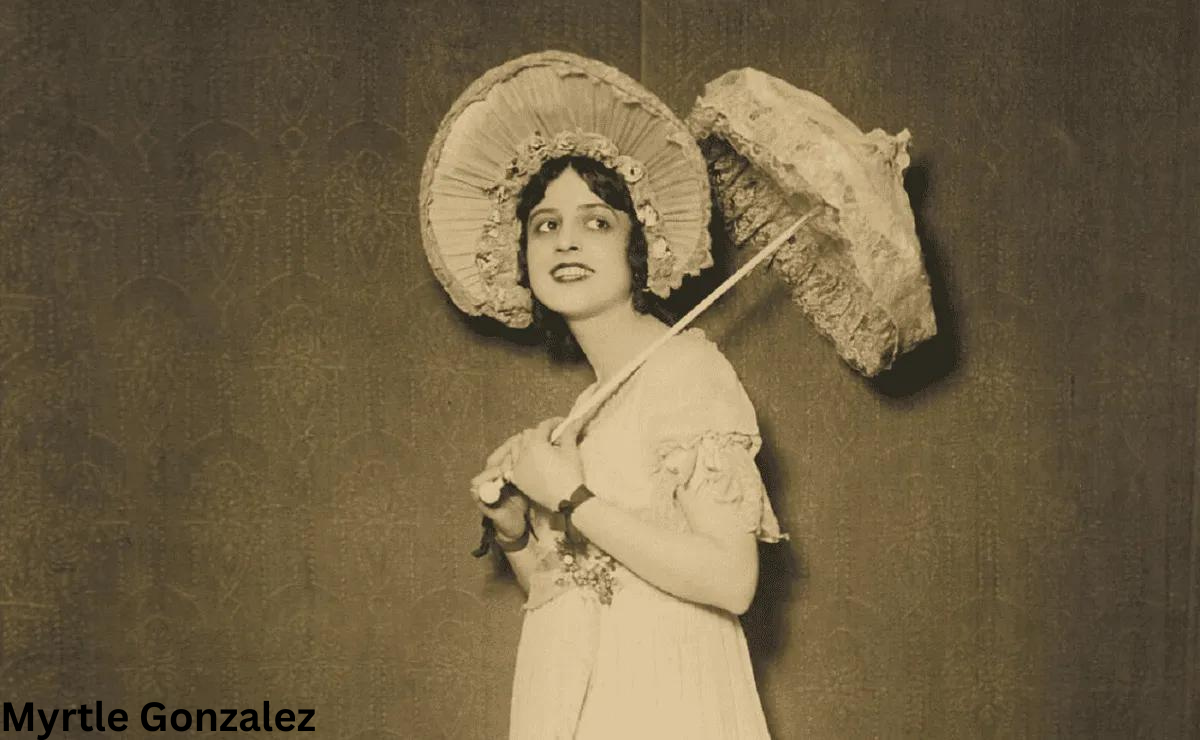When we talk about the early days of Hollywood, certain names shine brighter than others, and one such name is Myrtle Gonzalez. Known as one of the first Latina actresses to grace the silver screen, Myrtle Gonzalez broke boundaries at a time when the film industry was beginning to find its feet. Her story is one of talent, perseverance, and groundbreaking achievements that paved the way for many who followed.
Who Was Myrtle Gonzalez?
Born on September 28, 1891, in Los Angeles, California, Myrtle Gonzalez was of Spanish and Irish descent. Her father, Manuel George Gonzalez, was a native of California with deep roots in Spanish heritage, while her mother, Lillian Cook, was of Irish ancestry. From a young age, Myrtle showed a keen interest in performing arts, particularly in singing and acting. This early passion would soon propel her into the budding world of silent films.
The Early Life and Background of Myrtle Gonzalez
Growing up in a culturally rich household, Myrtle Gonzalez was exposed to a blend of Spanish and Irish traditions. This unique background not only gave her a diverse perspective on life but also played a significant role in shaping her career in Hollywood. Raised in Los Angeles, Myrtle was no stranger to the arts. She started performing in local theater productions and church choirs, where her vocal talent quickly caught the attention of many.
A Childhood Steeped in Arts
- Myrtle was a gifted child who performed in choirs and community plays.
- She was praised for her soprano voice, which earned her spots in local musical productions.
- Her parents supported her passion, nurturing her talent from a young age.
Myrtle Gonzalez’s Entry into Silent Films
The world of cinema was undergoing a revolutionary change in the early 1910s. Silent films were becoming a popular medium of entertainment, and Los Angeles was emerging as the heart of this new industry. Myrtle Gonzalez found her way into this dynamic environment, landing her first roles in silent films.
Breaking into the Industry
- Myrtle’s early roles were with small studios where she honed her craft.
- She soon signed with Vitagraph Studios, one of the most prominent film studios of that time.
- Her presence on screen was magnetic, and her acting style was natural, which set her apart from her contemporaries.
Key Films of Myrtle Gonzalez
Myrtle Gonzalez starred in over 80 films throughout her career, leaving an indelible mark on the silent film era. Some of her most notable films include:
- “The Little Sheriff” (1914): A drama where Myrtle played the lead role, showcasing her ability to carry a film on her own.
- “The Chalice of Courage” (1915): This film was pivotal for Myrtle’s career, solidifying her reputation as a leading actress.
- “The Secret of the Swamp” (1916): Her performance in this film highlighted her versatility and depth as an actress.
Myrtle Gonzalez: The First Latina Superstar
In an era when diversity on screen was minimal, Myrtle Gonzalez stood out not only for her talent but also for her heritage. She is widely recognized as the first Latina movie star in Hollywood, a significant achievement considering the societal norms and prejudices of the time.
Breaking Stereotypes
- Myrtle often played strong, independent characters, breaking the mold of the typical female roles in early cinema.
- Her success helped pave the way for future generations of Latina actresses in Hollywood.
- She proved that talent and hard work could transcend the barriers of race and ethnicity in a predominantly white industry.
The Impact of Myrtle Gonzalez on Hollywood
Myrtle Gonzalez’s impact on Hollywood is both profound and far-reaching. As a pioneering Latina actress, she helped redefine what it meant to be a leading lady in Hollywood. Her performances were marked by a depth of emotion and an authenticity that resonated with audiences.
Her Influence on Later Generations
- Myrtle Gonzalez inspired countless Latina actresses who followed in her footsteps.
- She opened doors in an industry that was not initially welcoming to diversity.
- Her legacy continues to be celebrated by film historians and cultural scholars alike.
Myrtle Gonzalez’s Personal Life and Legacy
Beyond her professional life, Myrtle Gonzalez was known for her warm and generous personality. She married actor Allen Watt in 1917 and took a brief break from acting to focus on her personal life. Unfortunately, her career and life were cut short when she died at the young age of 27 at the young age of 27 during the influenza pandemic of 1918.
A Life Remembered
- Myrtle Gonzalez passed away in Los Angeles, the city where she was born and raised.
- Her legacy is commemorated by film enthusiasts and the Latino community, who see her as a trailblazer.
- Even though her career was brief, her impact on the film industry was significant.
The Silent Film Era: A Snapshot
To fully appreciate Myrtle Gonzalez’s contributions, it is essential to understand the context of the silent film era. This period, which lasted from the late 1890s to the late 1920s, was marked by innovation and experimentation in filmmaking.
| Feature | Silent Film Era (1890s-1920s) |
|---|---|
| Technology | Films were without synchronized sound; accompanied by music. |
| Prominent Studios | Vitagraph, Biograph, Edison Studios, Keystone, Universal. |
| Key Figures | Charlie Chaplin, Mary Pickford, Myrtle Gonzalez, D.W. Griffith |
| Genre Popularity | Comedy, Drama, Adventure, Romance |
| Legacy | Laid the foundation for modern filmmaking techniques. |
Challenges of the Silent Film Era
- Actors had to rely on exaggerated facial expressions and gestures to convey emotions.
- Films were often shot in natural light, requiring actors to adapt quickly to different environments.
- Despite these challenges, stars like Myrtle Gonzalez thrived, showcasing their versatility and charisma.
The Lasting Legacy of Myrtle Gonzalez
Even though Myrtle Gonzalez did not live to see Hollywood evolve into the global powerhouse it is today, her contributions laid a solid foundation. She demonstrated that diversity in casting could lead to compelling storytelling and wider audience appeal.
Celebrating Myrtle Gonzalez Today
- Film scholars study her work to understand the early days of cinema.
- Cultural organizations recognize her as a pioneering Latina actress in American film history.
- Her story is a reminder of the power of perseverance and passion in breaking down barriers.
Conclusion: Remembering Myrtle Gonzalez
Myrtle Gonzalez remains an inspiration, not just for her accomplishments as an actress but also for her role in breaking down ethnic and cultural barriers in Hollywood. Her story reminds us that even in the face of adversity, true talent and determination can shine through. She set a precedent for future generations of Latina actresses and continues to be celebrated for her pioneering spirit and unforgettable contributions to the world of cinema.
Through her short yet impactful career, Myrtle Gonzalez proved that the silver screen could be a place of opportunity and inclusion, where stories from diverse backgrounds could find their rightful place. As we look back at historatywood’s history, her name stands out as a beacon of hope and a symbol of what can be achieved with talent, resilience, and a bit of courage.





